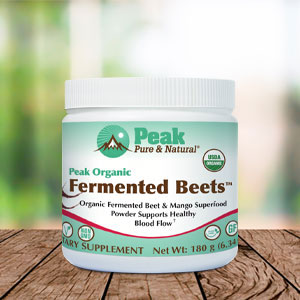Get Easy Health Digest™ in your inbox and don’t miss a thing when you subscribe today. Plus, get the free bonus report, Mother Nature’s Tips, Tricks and Remedies for Cholesterol, Blood Pressure & Blood Sugar as my way of saying welcome to the community!
Why heart attacks are more common in winter

It’s a fact: visits to emergency rooms for heart attacks tend to increase during the winter months.
And according to Dr. Nicholas Paivanas, there are three levels of people who are at risk for a winter heart attack…
The first level includes people who have been under a doctor’s care for some time for heart disease, heart failure, high blood pressure, high cholesterol, or other heart-related issues, as well as those who have had a heart attack in the past.
The next level includes people who have recently been diagnosed with heart problems. They’re more vulnerable since they are still working with a physician to manage their condition the best way possible.
The people who are at greatest risk, he says, are those who never see it coming. They have unknowingly developed severe narrowing in an artery, a condition that while they’re at rest may present no symptoms at all.
But these are the folks who go outside to shovel snow on a blistering cold day and “the stress on their blood vessels can cause a blockage to rupture, and then they suffer a heart attack.”
If you could fall into any of these categories, here’s what you need to know about the elevated risk for winter heart attack or stroke…
The science about the season of heart attacks
The SWEDEHEART Nationwide Observational Study was a 16-year study in which researchers followed more than 280,000 people to compare air temperature and seasonal variation with the incidence of heart attacks.
They found that the average number of heart attacks per day was significantly higher during colder temperatures compared to warmer ones.
According to the team, the association was so marked that it translated into four more heart attacks across Sweden per day when the average daily temperature was less than 32° F compared to when it was above 50° F.
When you consider the fact that Sweden has a population just three percent the size of the U.S., it’s clear that the number of heart attacks Americans could see during winter months may be far higher.
To top it off, the cold wasn’t the only issue…
The scientists found that the number of heart attacks was also increased by higher wind velocities, limited sunshine duration and higher humidity — all things we can expect from November through March and sometimes even April, in parts of the U.S.
But, why do winter months have such an impact on heart attack risk?
#1 – It makes the heart work harder
Cold weather can cause blood vessels, especially those that get cold first, like fingers and toes to narrow. This is called vasoconstriction.
“When you are cold, blood vessels narrow in your skin and fingers and toes, so that less heat is lost,” says Julie Ward, senior cardiac nurse at the British Heart Foundation. “But this narrowing creates more pressure in the rest of the circulation, meaning the heart has to work harder to pump blood around the body, increasing heart rate and blood pressure.”
This may be a normal response to the cold, but it puts extra strain on the heart. This can be especially risky for those with an existing condition or even during exercise or activities like shoveling snow.
#2 – It can increase your pulse
When your heart works harder to keep you warm, the rate of your pulse increases. A rapid pulse rate can put a strain on the heart.
“If you have a greater tendency to heart problems, including heart attacks, blood clots or heart rhythm disturbance, the effect of cold weather on the heart can be more pronounced as an additional risk,” says Dr Andrew Jordan, a consultant cardiologist.
#3 – Can elevate stroke risk
Exposure to very cold weather can also elevate the risk of stroke.
“The factors in your blood that cause it to clot become more concentrated and, at the same time, the natural anticoagulants, which help prevent clots, leave your bloodstream,” explains Ward. “This all makes a heart attack or a stroke more likely.”
According to Dr. Nicholas Paivanas, in people with a buildup of material plaque (a hard substance made of fat, cholesterol, calcium, and other substances in your blood), cold weather could increase the risk of that plaque rupturing, which can lead to a heart attack.
Stay inside, stay warm — but stay active
Those most at risk are the elderly and people with existing conditions that increase their risk of heart attack or stroke.
However, we know heart attacks can come out of the blue. So it’s wise to exercise some caution during the really cold winter months.
Stay inside on the coldest days when possible. And, when you need to be out and about, dress appropriately. Never underestimate the importance of loose layers and always wear a hat and gloves.
Remember to stay active, especially on the days you don’t go outside, even if it’s just walking for several minutes a day inside your home or accessing exercise videos on your smartphone or computer. Get the all-clear from your doctor for exercise if you have pre-existing conditions.
Dr. Jordan adds, “If older people choose to stay inside for long periods to avoid [cold weather risks], and don’t keep active in other ways, this can place them at higher risk of suffering a blood clot.”
Additionally, the researchers in the SWEDEHEART study caution that respiratory tract infections and influenza are known risk factors for heart attack that have a clear seasonal variation.
Editor’s note: There are perfectly safe and natural ways to decrease your risk of blood clots including the 25-cent vitamin, the nutrient that acts as a natural blood thinner and the powerful herb that helps clear plaque. To discover these and other secrets of long-lived hearts, click here for Hushed Up Natural Heart Cures and Common Misconceptions of Popular Heart Treatments!
Sources:
Air temperature is external trigger for heart attack — Science Daily
Warning over heart attacks and strokes caused by cold temperatures — Independent
How Cold Weather Can Increase the Risk of Heart Attacks — Medstarhealth.org
Why the Risk of Heart Attack Rises in Winter — Consumer Reports














